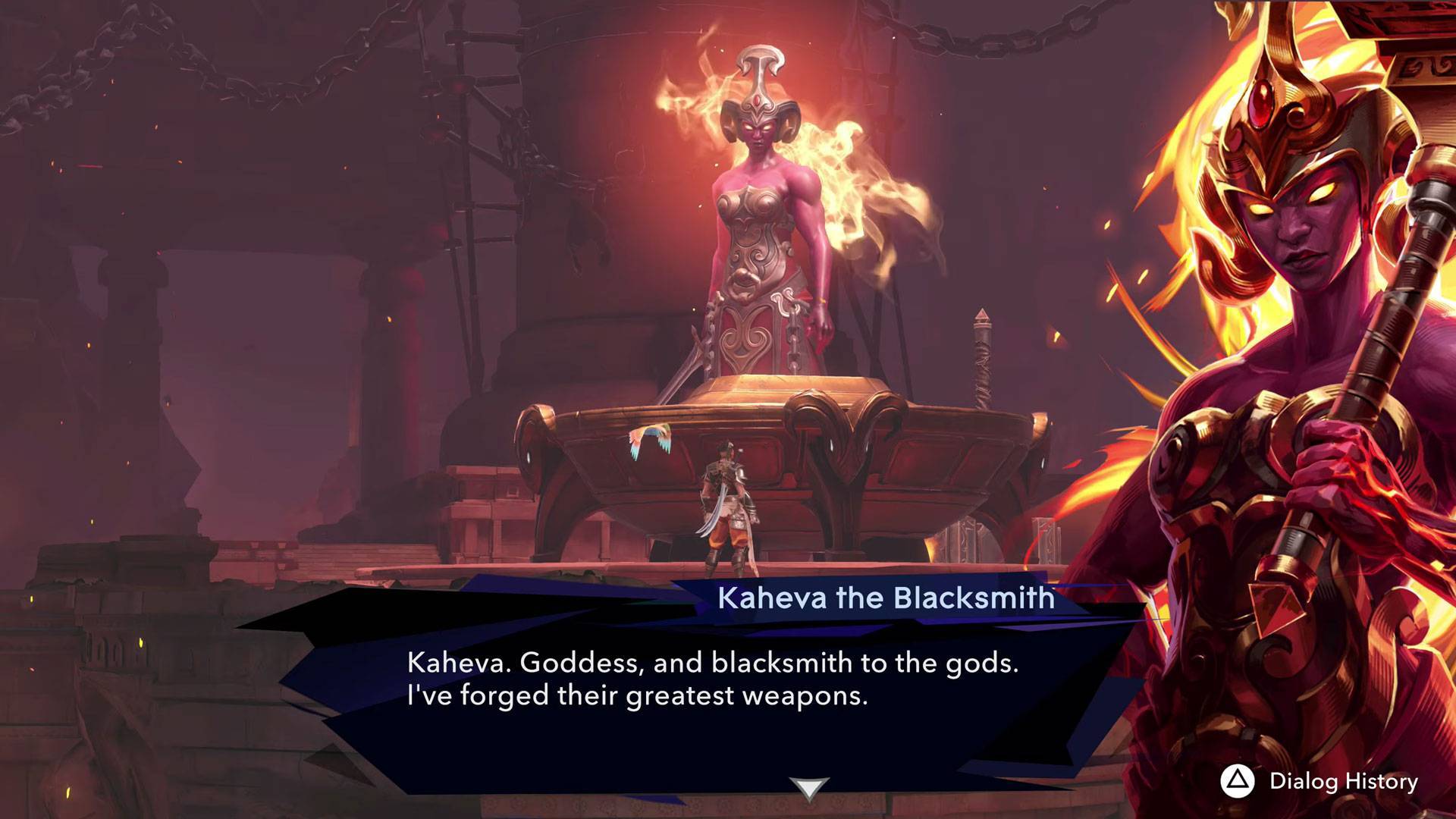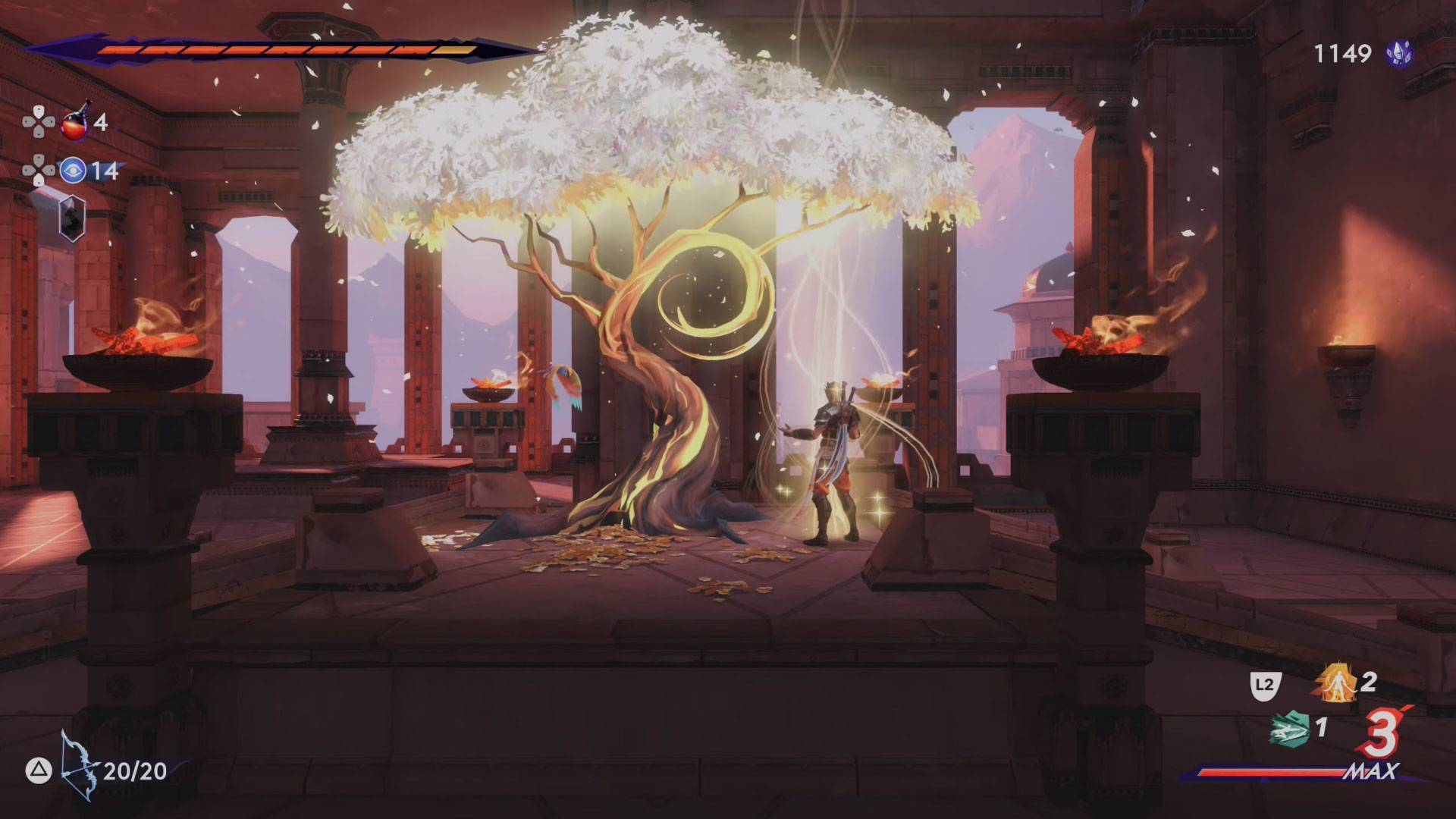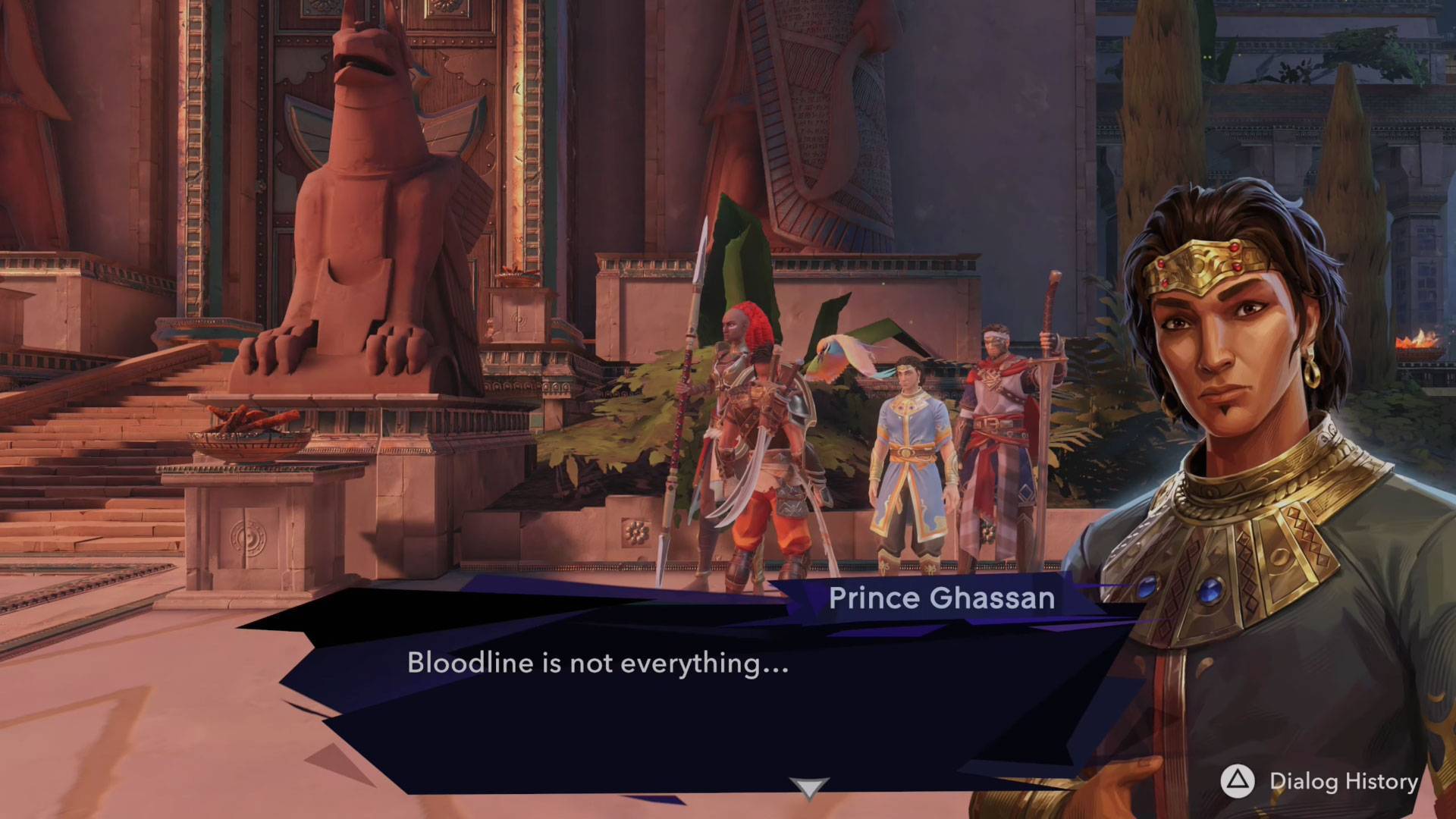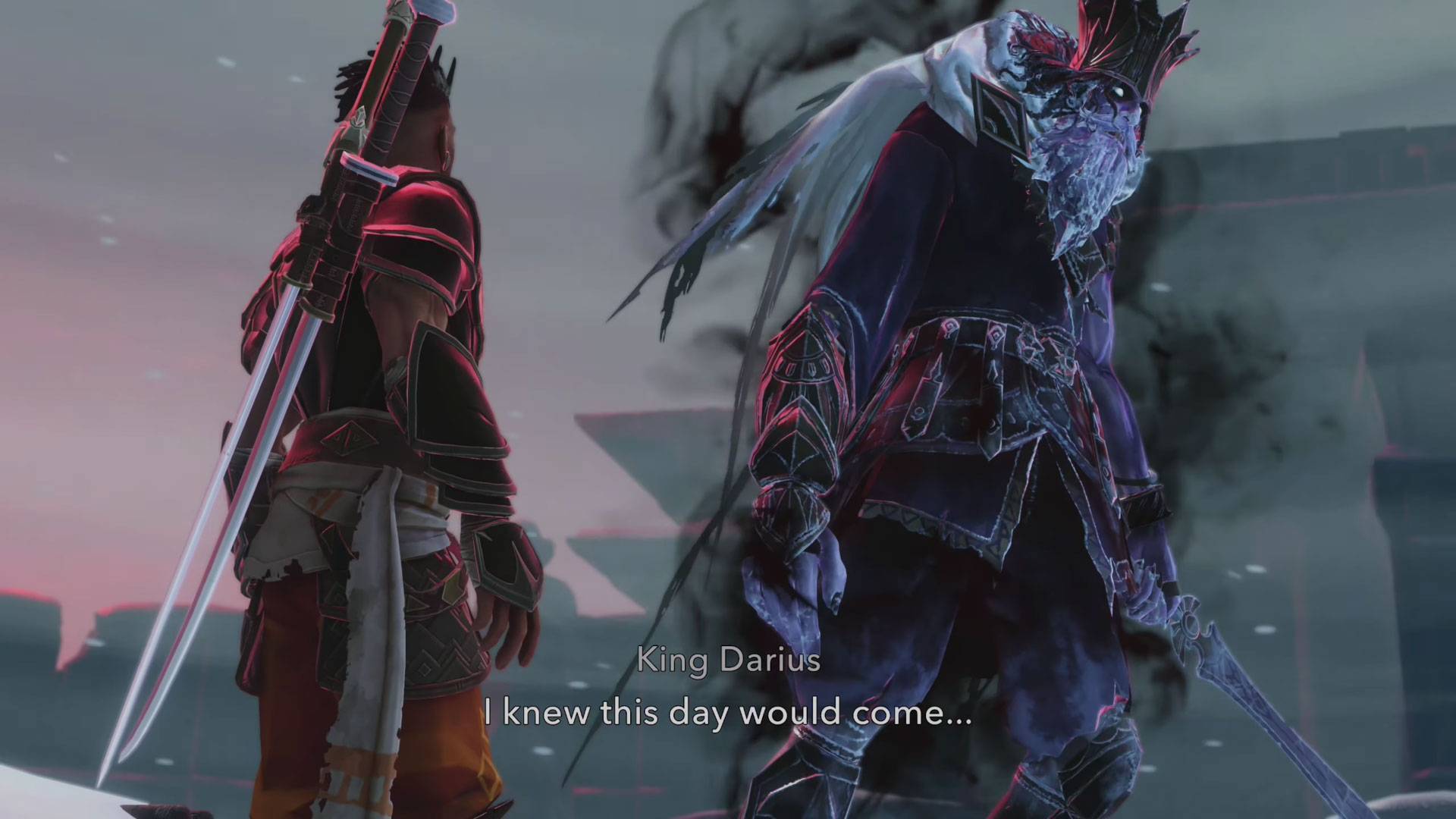Prince of Persia: The Lost Crown Review
PlayStation 5
Prince of Persia: The Lost Crown is yet another must-have game with a plethora of fresh content.
Reviewed by Rayan on Jan 15, 2024
The Prince of Persia series is among the game industry's oldest and has, for some reason, become mired in its history. But it's been almost a decade and a half since we got a proper entry of the Prince of Persia: The Forgotten Sands. My dad used to tell me stories about the first Prince of Persia he played on MS-DOS, and when I played my first Prince of Persia game, which launched in 2008, I instantly fell in love with it.
A new Prince of Persia game was something I was eagerly anticipating. But when the Prince of Persia: The Lost Crown was announced, fans of the series were upset because you aren't playing as the prince himself. I was also disappointed because this new entry doesn't look exactly like the classic Prince of Persia games I hoped for. But The Lost Crown does an excellent job of returning the game to its 2D origins in plot, platforming, and combat, as Ubisoft did. I got more than I had anticipated.

Prince of Persia: The Lost Crown isn't fundamentally different from other Metroidvanias. As you progress and unlock new powers, you unlock more and more of the 2D space map to explore. Although Ubisoft generally stuck to this pattern, they did add a few twists to provide what I consider to be one of the finest Metroidvania experiences in a long time.
The Lost Crown adds most of my favorite gameplay features. The game is obviously a Metroidvania, yet it seems more like Prince of Persia than anything else because of its incredible mashup of elements from Hollow Knight, Metroid Dread, Soulslike, and countless others.
Now we're back in Persia again, a realm guarded by the Immortals, an elite group to whom our hero belongs. These seven are incredibly powerful, almost supernatural sorts; the game begins with a massive fight that culminates in the fall of the enemy general; however, the festivities turn for the worse when the prince is abducted.
As the youngest Immortal, Sargon, we take control of a character who has vowed to save the Prince of Persia. Our journey takes us to the ancient city where the god of time resides, who has been absent for some time. When the timeframes start to blend, this place and the journey naturally take a strange turn.
Upon your arrival, the team splits up; when you reunite with them later, you'll notice they're much older than you thought. While some claim to have been here for days—or even 30 years—you've barely spent 5 minutes here. You come across what seems to be your true self after discovering the bow of a companion who would never part with it unless he was dead.
However, you soon encounter him in full health, and the bow in question has now been transformed into two separate copies. This sets the stage for some ingenious plot twists, and it goes without saying that you must unravel the mystery and rescue the prince.

In case you have never played a Metroidvania before, Prince of Persia: The Lost Crown essentially has a huge, vast map that is intricately linked. This allows you to explore at will, without being limited to a predetermined route, and move in any direction.
While there is likely a most efficient path, you are free to explore wherever you like—even if it means venturing into dangerous territory where you lack the necessary strength.
Additionally, there are certain places that cannot be traversed, mysteries that must be unlocked to be accessed, and alternate means of transportation that are not instantly available. Because of this, returning to areas you've previously investigated is crucial to progressing through the game.
Additionally, you are provided with unique markers that allow you to mark certain locations, indicating that something was there. Hovering over the map, though, does, in fact, provide a screenshot—a brilliant technique to jog your recollection of what's truly there.
Prince of Persia: The Lost Crown's progression system is surprisingly simpler than I had imagined. When I started it, I expected the standard fare of a skill tree menu with three levels of unlocking powers related to health, fighting, and platforming, but that was completely wrong.
From the beginning, you have complete control over your jumping and wall jumping abilities, and the fighting systems are fully prepared to start mastering them the moment you spot an enemy to attack.
The Lost Crown, on the other hand, introduces a brand-new system of amulets in its place. With a predetermined number of slots, you can tailor your playstyle with a set of discovered passive perks. Amulets add strength and variety to the system but use several amulet spaces.
Thus, you will need to strategically arrange their composition to suit their play style. You can also level up the Health and Potions with the amulets. Collecting the Golden Flower Petals will add a health bar to the top of the screen; four will do it.

When you have gathered enough Time Crystals, the old lady in the Haven Hub region will grant them more healing potions and make them more effective. These improvements are vital for surviving lengthy boss encounters with multiple phases.
The master blacksmith Kaheva can also enhance your weapons, increasing their damage and, for a fee, the powers of most amulets. However, other than that, most of The Lost Crown's growth is based on gaining new powers as the story progresses.
To become an unbeatable legend, you must follow clues and defeat bosses, as they are essential to progressing the plot. More secrets lie within Mount Qaf, and you must return to areas you have already explored to obtain powerful items such as Petal Flowers, hidden amulet slot upgrades, and upgrade resources.
You can also find cosmetic items concealed about the world. On the other hand, I must admit that these are somewhat a letdown because they mostly alter Sargon's color scheme and infrequently introduce visually appealing armor pieces.
You can visit the classic checkpoints, represented by Yellow Trees, to save your progress, change your gear, and return to them after you die. It's essentially a bonfire. Additionally, you unlock Alters that allow fast travel after a short playthrough, which is crucial because the map is enormous.
The Haven is the hub where you can meet NPCs, purchase items, advance missions, and gain upgrades. In addition, there was also the blacksmith and a swordsman. More unusually, the swordmaster Artaban allows you to take on combat challenges—essentially, tutorials—to hone your fighting skills.
They're worthwhile since they earn you Time Crystals that you can use to develop your character and teach important mechanics you might miss otherwise. Furthermore, there is an abundance of secret passages, breakable walls, hidden rooms, and mystery treasures scattered throughout the game.
The detailed level is great since it makes you care about what you're doing and where you are, which increases your chances of finding something. In addition to the more commonplace artifacts and narrative items, you will earn certain outfit alternatives that are a little intriguing.

Combat is where Prince of Persia: The Lost Crown really shines. With the initial weapon, Qays, and Layla—names of Sargon's twin blades—you have plenty of options right from the bat. Not only do you have charge attacks and your standard attack combos, but you may also unlock more powerful combos through various means.
You have the option of holding down to launch an assault with a leg sweep or holding up to deliver an uppercut. Slam down if you're flying, or kick upwards to start a juggle if you're dash attacking; then, jump up and start juggling foes while airborne.
You can push enemies aside or smash them into obstacles with a full sprint attack, like a shove kick. And then there are the fundamentals, like dodging attacks, parrying and punishing as usual, or slipping past enemies to get behind them. However, you should be mindful of certain unique strikes.
Parrying yellow attacks will reward you with strong animations. Performing these animations is incredibly exciting since you can be amid an attack and instantly execute one of these special moves by parrying an attack regardless. But there are red attacks that you should try to avoid because you can't parry them.
Combat becomes more thrilling when it comes to combos. You can substitute two basic attacks with a stronghold for a special double stab or perform a hail-down strike in the air for a special slam instead of executing three basics.
Eventually, you'll be able to acquire the Bow of Menolias and a Chakram of Menolias, and combos might get more intricate and lengthier if you incorporate bow shots or surges. You can shoot up to ten arrows simultaneously, dealing reasonable damage with the bow. You can improve it with upgrades, but it's designed for combos.
So, for instance, if you're juggling an opponent in the air, you may extend the amount of time you both spend in the air by using an air shot to break your own combo and then beginning a new one. In contrast, the Chakram permits real aim shots, entertaining to watch as they whirl about.
While it reveals the future course of events, the most exciting part is being able to parry your Chakram as it comes back to you. This will cause it to return at twice the speed and earn you resources and other perks. That's a fantastic weapon to have on hand when fighting a group of enemies.

Then there are Athra Surges, which possess unique abilities. Levels allow you to find and control them; you can fill a bar (which you may need to do more than once) and then use it to activate powers. Because of its dual attacking and defensive uses, their level cost varies with their power.
Though powerful, you are limited to using only two at any moment, and there are cooldowns for them. Take the Dash Attack, which can bypass all protections and provide an instant opportunity to deal extra damage. Similarly, the Spin Attack deals excellent damage, particularly while the enemy remains inside.
Fighting a staggered boss is an excellent way to strike damage. Wind of Sistan and similar defensive alternatives, on the other hand, create a powerful healing zone that you can stand in. Another great thing about these surges is that they may be used in combos to create new attacks.
When you reach a certain point in Prince of Persia: The Lost Crown's main mission, you can unlock Time Power. Using the Time Power known as the Shadow of Simurgh, you can reposition yourself in battle, solve riddles, and return to a safe platforming area. The game features a total of six of these.
Thanks to these, you can start discovering the area more engagingly, opening doors to previously unreachable places and allowing you to solve previously inaccessible puzzles. They appear at key moments while you go through the story's progression. Naturally, it's something you merely obtain, but it opens up new possibilities: you can revisit previously visited areas and find even more secrets.
You can utilize the first one, the legendary wall run, to build a wall out of thin air wherever you like. From a mechanical standpoint, it's little more than a pipe dream after all the spots you can hardly reach, but it looks impressive visually. You need to pay attention to something else before combat, and that's with the amulets.
There are approximately 24 amulets, each of which offers passive benefits, and this is the primary method by which Ubisoft Montpellier enables you to put things together. They are worth your time because you can get them through exploring, looting, purchasing, and even side quests. They quickly expand the number of spaces from three when you start. These seem to aid in developing your playstyle while providing significant power surges.

As expected from a Prince of Persia game, The Lost Crown features a wide array of platforming challenges. Here, the platforming is based on the fundamentals of the Prince of Persia game: climbing walls, sprinting through levels, sliding past enemies, avoiding traps, and so on. However, the traps might be extremely tight. Jump times are crucial for them, as you don't want to go too far or too high. Clipping them can be incredibly painful, yet getting by can be satisfying.
You'll swiftly advance through the platform's complexity; first, it's simply mounting objects and managing leap height and distance; however, after you acquire the bow, you'll unlock the platform and have to aim while moving; finally, at the last second, you'll land on the platform you just constructed. You need to balance Chakram fire-changeable machinery in specific ways to access certain areas; timing is crucial, as it will flit back to you.
It does seem quite lacking in evident or clear indications when it comes to finding the correct path to explore. As I stumbled into unfamiliar territory and across challenging terrain, I wondered if I was even on the correct track. Some parts are obviously meant to be completed later on, but the game gives you the green light to jump right in if you'd like. Plus, there's a limit beyond which you can't just force your way through.
At the beginning of the game, you have the choice to switch to an easier mode for navigation, but I think the usual mode might use some subtler indicators. For example, you can get tips from the NPC at the hub about what to buy or follow the yellow lines that go to the trees. On the whole, though, the map and how you navigate it feels great; if there are any mysteries, paying close attention to your location will be worthwhile.

Prince of Persia: The Lost Crown's boss fights are fantastic. As you progress through the main section of the game, you'll encounter several mini-bosses. You'll face off against a general atop a horse in a two-part boss encounter at the game's beginning; to defeat him, you'll need to dismount his horse. Jahandar, the towering manticore and first major enemy, uses the game's mechanics simultaneously.
To defeat the boss and take out the floating orb, you'll need to use your bow and Chakram to do enough damage to it. This includes the red strikes you must avoid, the yellow ones you must parry, and the damage per second windows that appear when you land a stagger, which you must maximize by—likely—surge.
Using the Chakram parry to safely finish the final piece of hell at the end was great fun. You would be curious to witness the game's difficulty level during boss fights because you were presented with many challenges during each boss fight.
Prince of Persia: The Lost Crown has a significantly more minimalist approach to its visual style. The art style compensates for the lack of detail by favoring modest pixel counts, vibrant edges, and extremely broad strokes for all textures. Most of the time, it's spot on; even in densely spiked places, the aesthetic arrangement of the spikes makes them seem fantastic.
Each artwork adds its unique personality to the space, creating clear boundaries between rooms and ensuring that no two hallways ever feel alike. What made this stand out to me was the segment with red crystals later in the game, which takes place in stunningly gorgeous sandy landscapes and allows you to platform across them.
While not game-breaking, a couple of tactical snags I encountered were certainly surprises. Lip sync appeared to be off or completely broken in multiple cutscenes throughout the game. I'm not sure if these sequences were meant to be seen solely in Sargon's thoughts or what, but there were times when I thought I saw the character's lips move as the camera moved, so I thought it wasn't prompted correctly.
Some minor issues did arise, such as one side task that did not activate correctly upon completion of the objective. On other occasions, spinning blades didn't seem to make sounds, as if the sound system had stopped working.

Beyond these, I didn't have any further problems. From start to finish, the platforming and fighting seemed polished. Everything performed as it should have; the puzzles were challenging but not impossible to solve, and the enemies acted as predicted.
Everything fit so perfectly that the other issues I stated before were magnified. The game runs almost perfectly on PlayStation 5, which is not surprising given its minimalist art style. Most of the time, I had no hiccups when playing at a native 4K resolution with the rather simple graphics set to the maximum possible setting.
Although all the characters in Prince of Persia: The Lost Crown are nicely designed, I thought they were a little too obvious. So far, though, I've enjoyed the plot. I love how the platforming is entertaining and challenging; it keeps the action moving at a breakneck rate.
However, I really like the battle system so far; the game offers a surprising number of combos and options right from the start. You don't have to earn them all. There are five game modes to select: Rookie, Warrior, Hero, Immortal, and Custom.
I played on the basic Warrior difficulty, and everything seemed fairly balanced. You can adjust the health of enemies, the amount of damage they take from the environment, and other metrics in the Custom difficulty mode. I expected a fun Metroid-style gaming experience, and that's exactly what I got.
What really caught me off guard was the tale and all the time tricks; it's incredibly smart and loads of fun. How it develops is something you might find intriguing. In my opinion, the game is now perfect for those who enjoy 2D action platformers.

Prince of Persia: The Lost Crown is yet another must-have game with a plethora of fresh content. It refines aspects from games like Metroid Dread while including elements from earlier Prince of Persia titles.
As a triumphant return to form for the Prince of Persia series and Ubisoft in general, this is undeniably one of the finest games in the series' history and maybe Ubisoft's, too. The visuals are stunning, the plot is interesting and entertaining without being overwhelming, and the gameplay is so fascinating that you won't want to put the game down.
On a casual playthrough, you should be able to finish the game in about 20 hours; if you intend to uncover all of the secrets, it could take you 25 or more. Playing it repeatedly is a blast because of its manageable length and extremely addicting nature, which takes you back to a simpler time when you wanted to relive the joy of a good game. Prince of Persia: The Lost Crown is the ideal game for fans of Metroid Dread, Hollow Knight, and Castlevania; I can't speak highly enough of it.
Senior Editor, NoobFeed
Verdict
Prince of Persia: The Lost Crown is yet another must-have game with a plethora of fresh content. It refines aspects from games like Metroid Dread while including elements from earlier Prince of Persia titles.
100
Related News
No Data.

